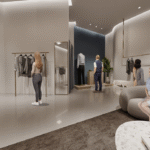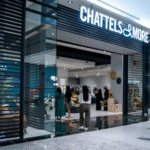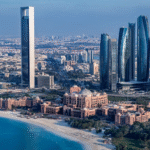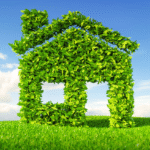Now Reading: Mixed-Use Developments Transforming Modern Urban Living
-
01
Mixed-Use Developments Transforming Modern Urban Living
Mixed-Use Developments Transforming Modern Urban Living
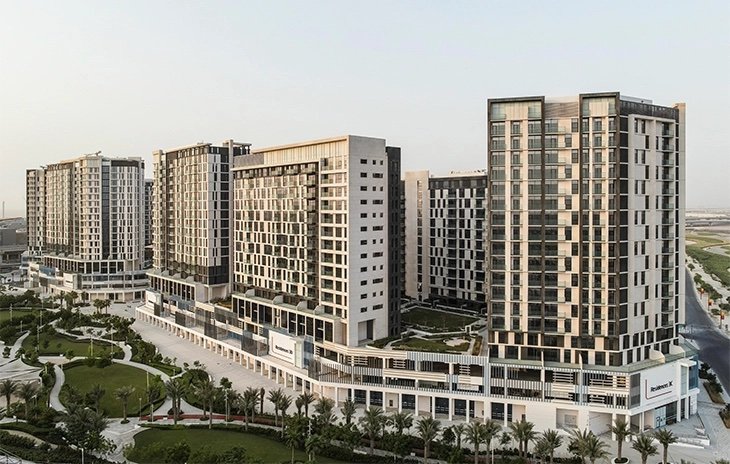
Mixed-use developments are changing the way people live, work, and interact with their cities. By combining residential, commercial, and recreational spaces into one integrated environment, these developments create vibrant communities where everything is just a short walk away. From luxury apartments above retail stores to office spaces beside parks and entertainment hubs, mixed-use projects are quickly becoming the backbone of modern urban planning.
Across the world, and especially in fast-growing regions like the Middle East and Asia, mixed-use developments are redefining the urban landscape. They are not only about convenience but also about creating sustainable, connected, and people-focused environments.
This article explores why mixed-use developments are gaining popularity, their benefits, global examples, and what the future holds for this growing trend.
Why Mixed-Use Developments Are Rising in Popularity
Cities are becoming more crowded, and people want more out of their living spaces. Mixed-use developments solve this by integrating living, working, shopping, and leisure within one location.
Some key drivers of this trend include:
- Urbanization: With more people moving to cities, the need for efficient land use is growing.
- Convenience: People prefer living close to work, shopping, and entertainment.
- Sustainability: Reducing the need for long commutes lowers carbon emissions.
- Community Living: Integrated spaces promote social interaction and a sense of belonging.
- Real Estate Value: Such projects tend to increase property values over time.
As a result, governments, developers, and city planners are prioritizing mixed-use projects to meet modern demands.
Benefits of Mixed-Use Developments
Mixed-use developments offer several advantages for residents, businesses, and cities as a whole.
For Residents
- Convenience: Access to shops, offices, gyms, and entertainment in one place.
- Lifestyle: A modern, dynamic way of living without long commutes.
- Health Benefits: More walkable communities promote active lifestyles.
For Businesses
- Higher Foot Traffic: Retailers and restaurants benefit from steady customer flow.
- Prestige: Offices in mixed-use hubs attract top talent with lifestyle perks.
- Synergy: Businesses thrive in environments where work and leisure coexist.
For Cities
- Efficient Land Use: Maximizes limited urban space.
- Reduced Traffic: Fewer cars on the road as people live closer to work.
- Economic Growth: Attracts investment and tourism.
Global Examples of Mixed-Use Developments

Mixed-use developments can be seen in major cities worldwide, each bringing unique approaches to integrated living.
Dubai: Downtown Dubai and City Walk
Dubai has embraced mixed-use planning with developments like Downtown Dubai, home to the Burj Khalifa, Dubai Mall, luxury residences, and offices. Similarly, City Walk combines upscale living with dining, shopping, and entertainment.
Singapore: Marina Bay Sands and Punggol Digital District
Singapore is a global leader in integrated developments. Marina Bay Sands is a landmark combining hotels, shopping, casinos, and entertainment. The Punggol Digital District blends smart workplaces with community living and green spaces.
New York: Hudson Yards
Hudson Yards in Manhattan is the largest private real estate development in U.S. history, integrating offices, luxury residences, retail, cultural spaces, and parks.
London: Canary Wharf
Originally a financial hub, Canary Wharf has been transformed into a mixed-use space with homes, parks, retail, and cultural centers.
These global examples show that mixed-use developments are not just a passing trend but a permanent feature of modern cities.
Design and Architecture in Mixed-Use Developments
Design is central to the success of mixed-use developments. Developers must balance commercial needs with livability and community engagement.
Key elements include:
- Walkability: Streets and pathways designed for pedestrians.
- Green Spaces: Parks, terraces, and gardens that promote well-being.
- Smart Layouts: Clear separation of residential, office, and leisure zones.
- Sustainability: Eco-friendly materials, energy-efficient systems, and smart waste management.
These features ensure that mixed-use projects are not just convenient but also sustainable and enjoyable.
The Role of Technology in Mixed-Use Developments
Technology is reshaping how mixed-use communities function. From smart homes to digital retail experiences, innovation is at the core of integrated spaces.
- Smart Living: Automated lighting, temperature control, and security systems.
- Digital Retail: Interactive shopping experiences supported by AR and VR.
- Sustainable Systems: Solar energy, green rooftops, and intelligent water use.
- Community Apps: Platforms connecting residents with events, facilities, and services.
By leveraging technology, mixed-use developments can deliver seamless urban living experiences.
Challenges in Developing Mixed-Use Projects
While the benefits are clear, mixed-use developments also come with challenges:
- High Costs: Construction and land prices can be expensive.
- Complex Planning: Balancing multiple uses requires detailed design.
- Traffic Management: If not planned well, congestion may increase.
- Cultural Adaptation: Some regions may be slower to embrace integrated lifestyles.
Successful projects overcome these challenges through strong planning, public-private partnerships, and innovative design solutions.
The Future of Mixed-Use Developments
The future of mixed-use developments looks promising, with trends pointing toward even more integrated, sustainable, and community-driven projects.
Key Trends Ahead
- Eco-Cities: Entire neighborhoods designed as mixed-use sustainable communities.
- Vertical Cities: Towers combining homes, offices, schools, and entertainment.
- Health and Wellness Focus: Spaces promoting mental and physical well-being.
- Cultural Integration: Design that reflects local identity and traditions.
- Smart Cities: Seamless integration of technology for better living.
These trends show that mixed-use developments will continue to reshape urban living for decades to come.
Final Thoughts
Mixed-use developments are more than just real estate projects; they are blueprints for the future of urban life. By blending work, play, and living into one environment, they solve many challenges of modern cities, from congestion to lifestyle needs.
From Dubai’s futuristic projects to Singapore’s green innovations and New York’s vertical hubs, the growth of mixed-use developments is unstoppable. As cities evolve, these integrated spaces will define the way we live, work, and connect with our communities.
In the end, mixed-use developments are not just shaping skylines-they are shaping lifestyles.
Follow us on: Instagram
Read More:-Dubai Housing Boom Is Stoking Fears of Another Crash



